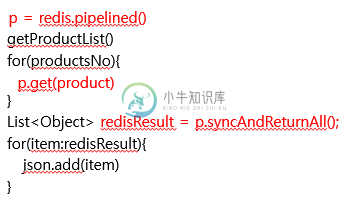开发设计规范 - 延迟考虑
优质
小牛编辑
140浏览
2023-12-01
1. 尽可能使用批量操作:
- mget、hmget而不是get和hget,对于set也是如此。
- lpush向一个list一次性导入多个元素,而不用lset一个个添加
- LRANGE 一次取出一个范围的元素,也不用LINDEX一个个取出
2. 尽可能的把redis和APP SERVER部署在一个网段甚至一台机器。
3. 对于数据量较大的集合,不要轻易进行删除操作,这样会阻塞服务器,一般采用重命名+批量删除的策略:
排序集合:
# Rename the keynewkey = "gc:hashes:" + redis.INCR("gc:index")redis.RENAME("my.zset.key", newkey)# Delete members from the sorted set in batche of 100swhile redis.ZCARD(newkey) > 0redis.ZREMRANGEBYRANK(newkey, 0, 99)end
集合:
# Rename the keynewkey = "gc:hashes:" + redis.INCR("gc:index")redis.RENAME("my.set.key", newkey)# Delete members from the set in batches of 100cursor = 0loopcursor, members = redis.SSCAN(newkey, cursor, "COUNT", 100)if size of members > 0redis.SREM(newkey, members)endif cursor == 0breakendend
列表:
# Rename the keynewkey = "gc:hashes:" + redis.INCR("gc:index")redis.RENAME("my.list.key", newkey)# Trim off elements in batche of 100swhile redis.LLEN(newkey) > 0redis.LTRIM(newkey, 0, -99)end
Hash:
# Rename the keynewkey = "gc:hashes:" + redis.INCR( "gc:index" )redis.RENAME("my.hash.key", newkey)# Delete fields from the hash in batche of 100scursor = 0loopcursor, hash_keys = redis.HSCAN(newkey, cursor, "COUNT", 100)if hash_keys count > 0redis.HDEL(newkey, hash_keys)endif cursor == 0breakendend
4. 尽可能使用不要超过1M大小的kv。
5. 减少对大数据集的高时间复杂度的操作:根据复杂度计算,如下命令可以优化:

6. 尽可能使用pipeline操作:一次性的发送命令比一个个发要减少网络延迟和单个处理开销。一个性能测试结果为(注意并不是pipeline越大效率越高,注意最后一个测试结果) :
logger@BIGD1TMP:~> redis-benchmark -q -r 100000 -n 1000000 -c 50PING_INLINE: 90155.07 requests per secondPING_BULK: 92302.02 requests per secondSET: 85070.18 requests per secondGET: 86184.61 requests per secondlogger@BIGD1TMP:~> redis-benchmark -q -r 100000 -n 1000000 -c 50 -P 10PING_INLINE: 558035.69 requests per secondPING_BULK: 668002.69 requests per secondSET: 275027.50 requests per secondGET: 376647.84 requests per secondlogger@BIGD1TMP:~> redis-benchmark -q -r 100000 -n 1000000 -c 50 -P 20PING_INLINE: 705716.25 requests per secondPING_BULK: 869565.25 requests per secondSET: 343406.59 requests per secondGET: 459347.72 requests per secondlogger@BIGD1TMP:~> redis-benchmark -q -r 100000 -n 1000000 -c 50 -P 50PING_INLINE: 940733.81 requests per secondPING_BULK: 1317523.00 requests per secondSET: 380807.31 requests per secondGET: 523834.47 requests per secondlogger@BIGD1TMP:~> redis-benchmark -q -r 100000 -n 1000000 -c 50 -P 100PING_INLINE: 999000.94 requests per secondPING_BULK: 1440922.12 requests per secondSET: 386996.88 requests per secondGET: 602046.94 requests per secondlogger@BIGD1TMP:~> redis-benchmark -q -r 100000 -n 1000000 -c 50 -P 200PING_INLINE: 1078748.62 requests per secondPING_BULK: 1381215.50 requests per secondSET: 379218.81 requests per secondGET: 537634.38 requests per second
一个场景是一个购物车的设计,一般的设计思路是:
在获取购物车内部货品时,不使用pipeline会很低效:
可以修改为:

